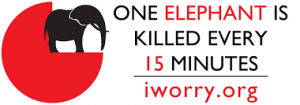Udzungwa Mountains National Park
This forest seems positively green and enchanted, it’s the largest and most bio diverse of the chain of a dozen of large forest mountains that rise from flat coastal scrub of Eastern Tanzania. The park is known as the Eastern Arc Mountains, and its isolated massifs have been dubbed the African Galapangos for the treasure of endemic animals and plants, mostly the Delicate African Violet.
These mountains are among the ancient ranges of Eastern Arc that have been accorded national park status. It’s also unique within Tanzania and its closed canopy forest spans altitude of over 250 m to above 2,000m without the interruption.
It is not only a game viewing destination but also a magnet of Hikers. It has got an excellent network of forest trails that include; the popular half day ramble to the Sanje water fall, which plunges about 170m through a misty spray into the forested valley below. There are also the two challenging night Mwanihana trail that leads to the high plateau with the beautiful views that surround sugar plantations, before ascending to the Mwanihana peak, which is the second highest point in the range.
The ornithologists are also attracted to Udzungwa for the avian wealth that embraces more than 400 species. These include the lovely and readily located green headed oriole to more than a dozen of the secretive Eastern Arc endemics. There are four bird species that are common in Udzungwa including the forest partridge that was discovered in 1991 and the more closely related to the Asian genus than to any other African fowl.
The main six primate species recorded here include; the Iringa red colobus and the sanje crested mangabey and these occur nowhere else in the world and these were undetected by the biologists prior to 1979.
About the Udzungwa Mountains National Park
The park has got a size of over 1990 sq km.` its location is 5 hours’ drive from Dar Es Salaam south west of Mikumi. Getting to this park requires a drive from Dar es Salaam or Mikumi National park. There are many things to do in the park including; the two hour hike to the water fall for the camping safaris and also combining with the nearby Mikumi as you drive to Ruaha. The national park can be visited all year around although becomes slippery in the rainy season. The dry season is usually from June to October before the short rains.
The accommodation facilities in this national park include; Twiga Hotel, Sanje Campsite, Public Campsite, these include 1, 2, & 3 and are located near the park headquarters. The others include; Mizimu which is also a public campsite, Njia panda and Mbatwa , Ibito, Simba,Mikangazini, Tembo, campsites.




